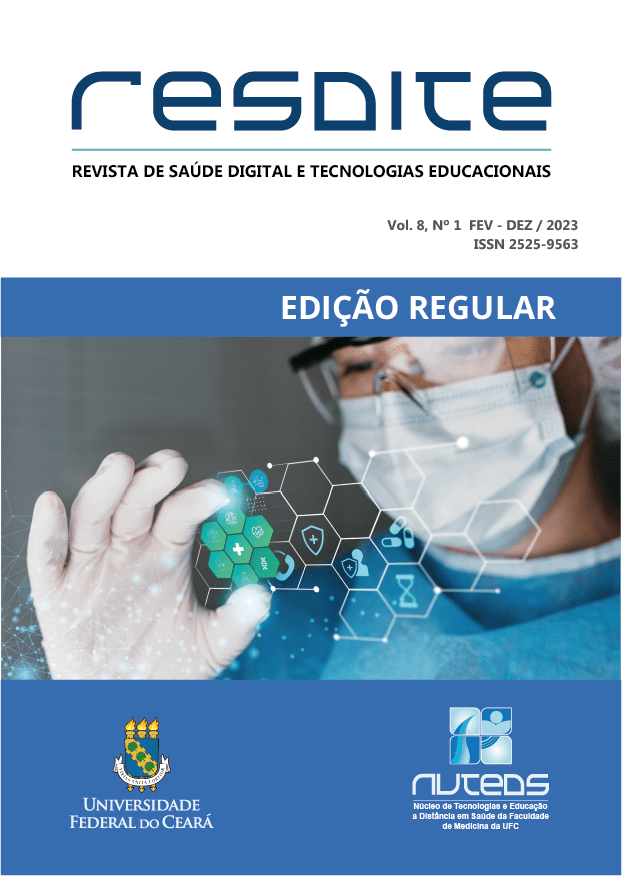Assessment of proficiency in videolaryngoscopic orotracheal intubation with the xlearn® mobile application
Schlagworte:
learning curve, laryngoscopy, intubationAbstract
Introduction: There is no precise definition of how many times a trainee specialist must perform orotracheal intubation via video laryngoscopy (VL) before they can be considered proficient in this procedure. Objective: To compare psychomotor learning curves for acquisition of proficiency in VL-assisted orotracheal intubation between medical students and two groups of physicians (with and without prior experience in conventional laryngoscopy). Materials and Methods: Orotracheal intubation was simulated using a manikin. The VL device consisted of a 3D-printed laryngoscope blade and an endoscope used to transmit the image captured at the blade to a monitor. Participants were divided into three groups according to their expertise: medical students (n=3), physicians with no prior experience of laryngoscopy (n=3), and physicians experienced in performing conventional laryngoscopy (n=3). A mobile application, XLEARN®, was developed and used to construct learning curves. Results: All participants crossed the 5% acceptable failure rate line (h0) before completing 200 intubations. The number of attempts required to achieve proficiency ranged from 43 to 85. Tukey’s test showed a statistically significant difference between medical students and physicians with prior experience. Conclusion: The XLEARN® application is a health education tool that allows continuous follow-up of acquisition and maintenance of the skills, such as orotracheal intubation.
Keywords: learning curve, laryngoscopy, intubation.
Downloads
Literaturhinweise
[2] Gasperin BDM, Zanirati T, Cavazzola LT. A realidade virtual pode ser tão boa como o treinamento em sala cirúrgica? Experiências de um programa de residência em cirurgia geral. ABCD Arq Bras Cir Dig. 2018;31(4):e1397. doi:/10.1590/0102-672020180001e1397.
[3] Clede-Belforti L, Nazar-Jara C, Montaña-Rodríguez R, Corvetto-Aqueveque M. Simulación en anestesiologia. Rev. mex. anestesiol. 2013;36(3):219-24.
[4] Correa JBB, Dellazzana JEF, Sturm A, Leite DMA, Oliveira Filho GR, Xavier RG. Aplicação da curva CUSUM para avaliar o treinamento da intubação orotraqueal com o laringoscópio Truview EVO2®. Rev. bras. anestesiol. 2009;59(3):321-31.
[5] Yamanaka CS, Góis AFT, Vieira PCB, Alves JCD, Oliveira LM, Blanes L, et al. Intubação orotraqueal: avaliação do conhecimento médico e das práticas clínicas adotadas em unidades de terapia intensiva. Rev. bras. ter. intensiva. 2010;22(2):103-111.
[6] Lewis SR, Butler AR, Parker J, Cook TM, Schofield-Robinson OJ, Smith AF. Videolaryngoscopy versus direct laryngoscopy for adult patients requiring tracheal intubation: a Cochrane Systematic Review. Br J Anaesth. 2017;119(3):369–83.
[7] Orebaugh S, Snyder JV. Direct laryngoscopy and endotracheal intubation in adults. UpToDate. [Internet] 2019, acessado dia 05/12/2021. https://www.uptodate.com/contents/direct-laryngoscopy-and-endotracheal-intubation-in-adults.
[8] Hurtado EM. ¿Tenemos suciente experiencia con los videolaringoscopios? ¿Hay accesibilidad en nuestros hospitales a los equipos de vía aérea avanzada?. AnestesiaR7. 10. 2015.
[9] Pieters BMA, Wilbers NER, Huijzerv M, Winkens B, Van Zundert AAJ. Comparison of seven video laryngoscopes with the Macintosh laryngoscope in manikins by experienced and novice personnel. Anesthesia. 2016;71(5):556-564. doi:10.1111/anae.13413.
[10] Quintão VC. O anestesiologista e a COVID-19. Braz. J. Anesth. 2020;70(2):77-81.
[11] Russotto V, Myatra SN, Laffey JG, Tassistro E, Antolini L, Bauer P, et al. Intubation Practices and Adverse Peri-intubation Events in Critically Ill Patients From 29 Countries. JAMA. 2021;325(12):1164-1172. DOI: 10.1001/jama.2021.1727.
Downloads
Veröffentlicht
Ausgabe
Rubrik
Lizenz
Os originais aceitos e publicados tornam-se propriedade da Revista Brasileira de Tecnologias Educacionais em Saúde. A revista adota a Licença Creative Commons, CC BY-NC. É possível acessar, baixar (download), copiar, imprimir, compartilhar e distribuir os artigos publicados conosco, desde que para uso não comercial, mencionando a RESDITE e atribuindo os créditos de autoria. A revista permite que os autores distribuam a versão do trabalho publicada conosco (ex.: em repositórios institucionais), desde que seja reconhecida a autoria e a publicação inicial na RESDITE.

